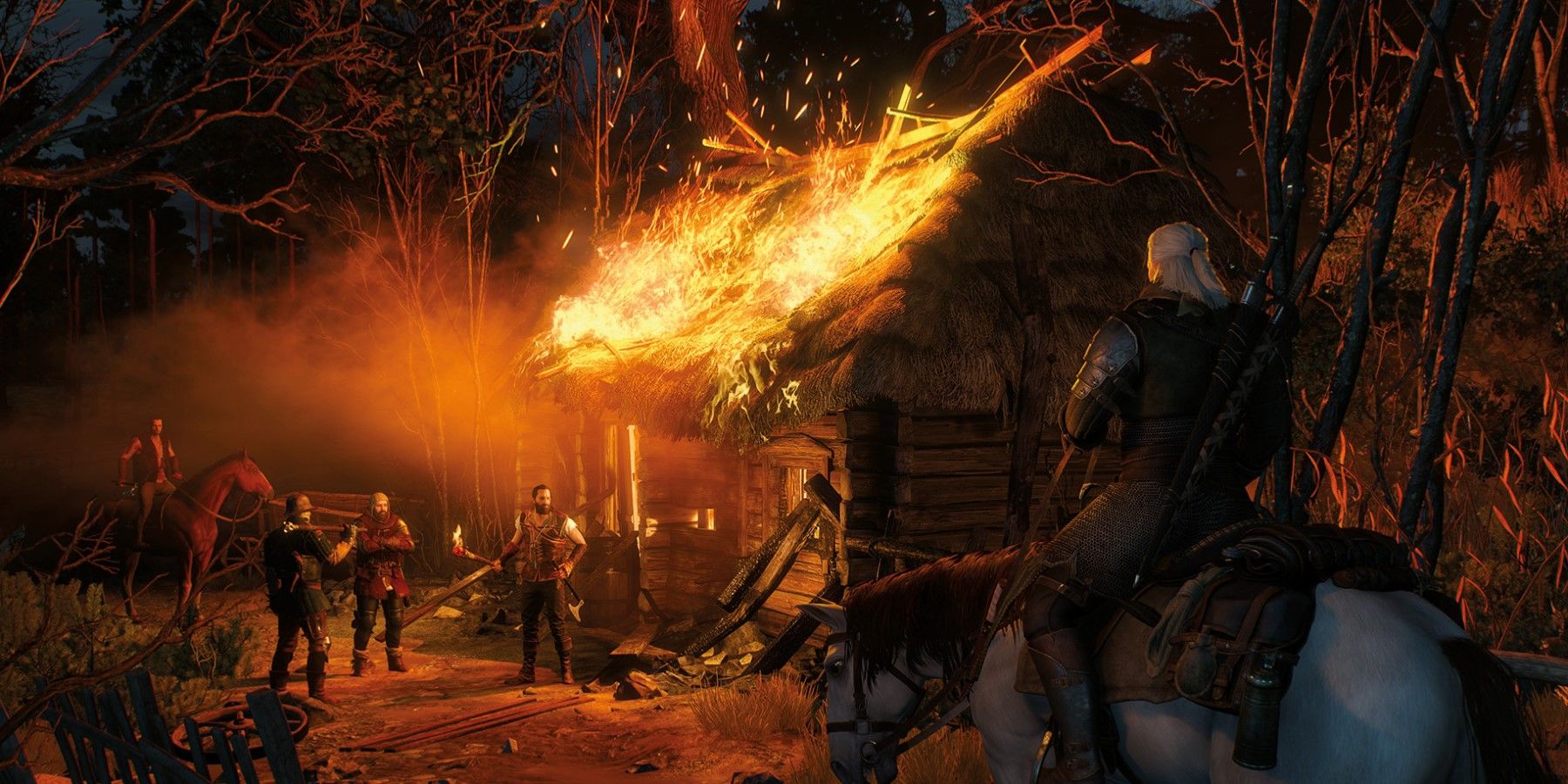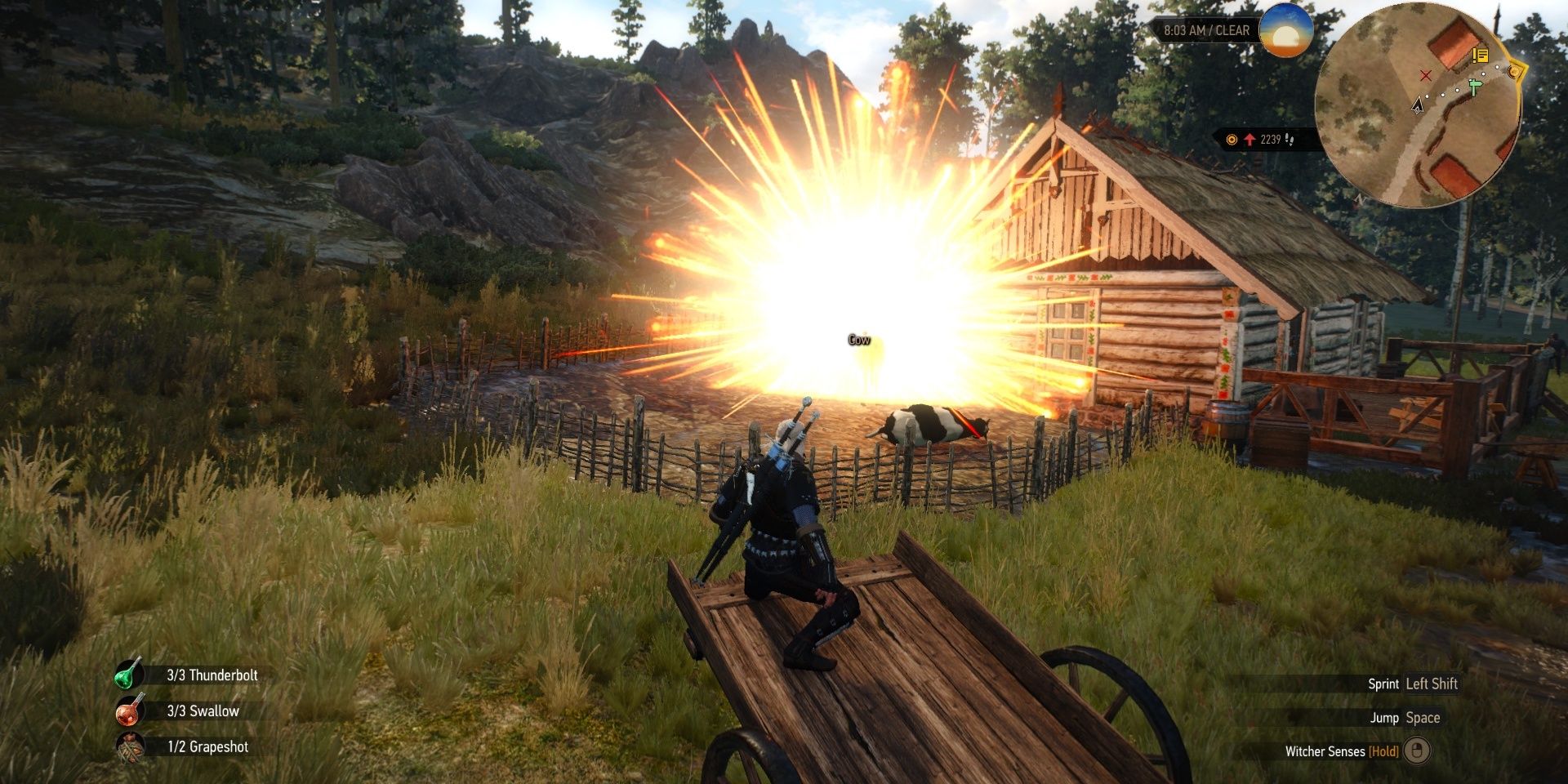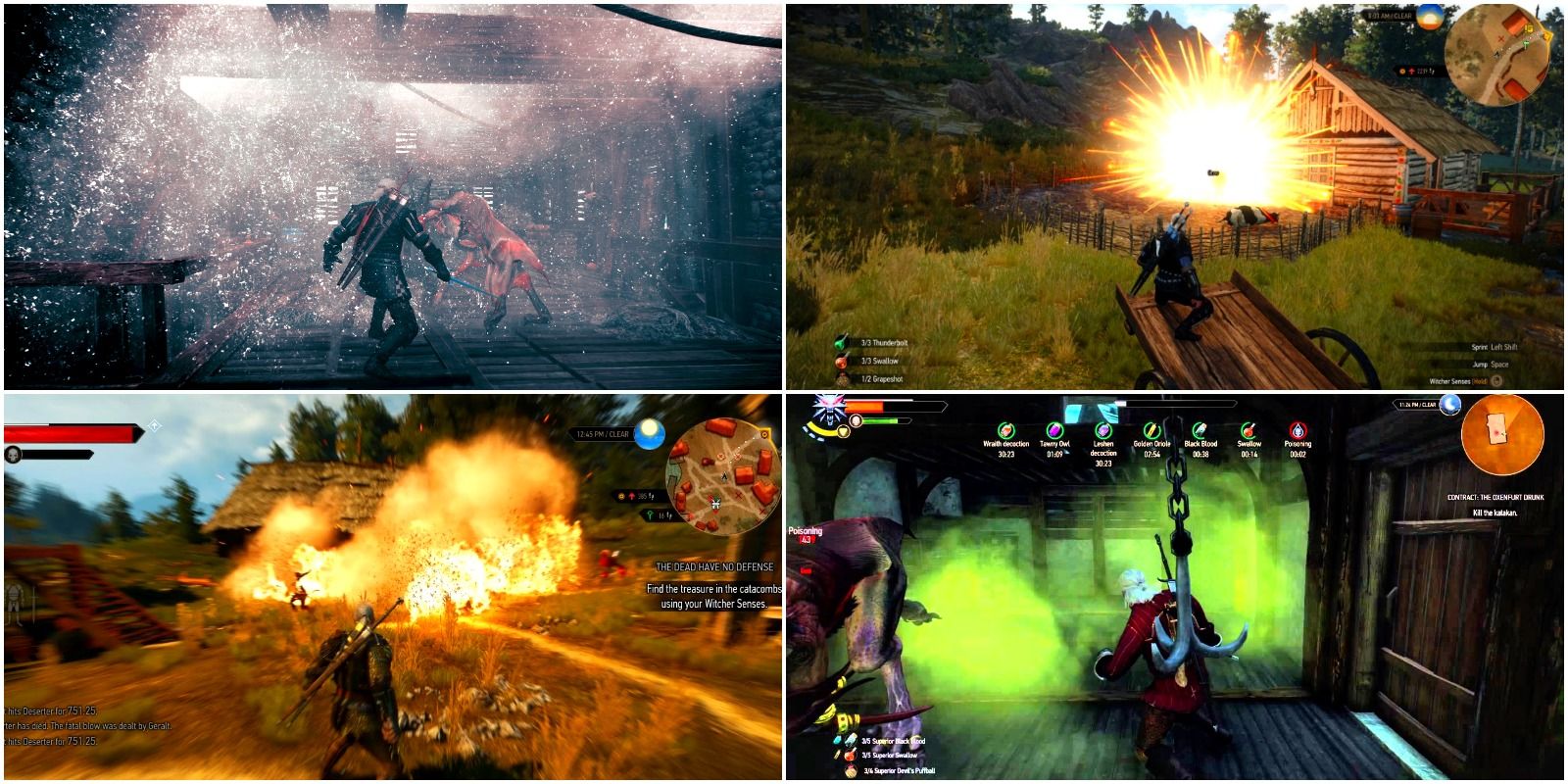With multiple new Witcher games on the distant horizon, many fans are revisiting CD Project RED's Witcher 3. The third title in the Witcher franchise is often considered one of the best RPGs of all time, with a sprawling world, engaging story, and complex characters. In Witcher 3, protagonist Geralt of Rivia uses steel, silver, magic, and alchemy to hunt and destroy the monsters that prey on humanity.
Bombs are some of Geralt's most potent alchemical tools, allowing him to even the odds against the world's most deadly and powerful monsters. There are 8 different kinds of Bombs in Witcher 3, each with three tiers of effectiveness. In order to craft them all, players will not only need to gather the raw ingredients, but also the correct diagrams.
How To Make Bombs In Witcher 3
At the start of Witcher 3's story, players will only know the Samum Bomb diagram. All 23 of the other diagrams must either be found in chests or bought from one of the many herbalists and alchemists that will trade with Geralt. Once players have bought the correct diagram, they can open the Alchemy tab to discover the Bomb's ingredients.
These ingredients can be herbal, chemical, or mineral, and can either be found in the world or bought from herbalists. All 8 of the basic bombs, that is not Enhanced or Superior, require some amount of Saltpeter, so players who want to focus on getting the early bombs should make sure to gather a substantial supply. Once players have acquired the necessary materials, they'll be able to combine them in Witcher 3's Alchemy tab to craft the bomb. This only needs to be done once, after which Geralt will carry a constant stock of each bomb that has been crafted, and replenish that stock using Pure Alchohol whenever he meditates.
All The Bombs In Witcher 3
There are 8 Bombs in Witcher 3, each with a unique effect on enemies. Before they can be thrown, Bombs must be equipped on the item wheel, either using Tab on PC or L1 on controllers, this will allow players to switch between their Bombs and choose the one they want. Once this is done, Bombs can be thrown straight forwards by tapping Middle-Mouse or R1, or aimed more precisely by holding those keys.
- Dancing Star - Produces a fiery explosion that can ignite opponents, causing them to panic and take damage over time.
- Devil's Puffball - Releases a long-lasting cloud of poison, dealing constant damage to any enemy that remains in the area.
- Dimeritium Bomb - Releases a cloud of the anti-magic metal dimeritium, blocking all Witcher 3's magic and magical abilities.
- Dragon's Dream - Produces a cloud of flammable gas, which can then be ignited with another Bomb or Sign to create a large fiery explosion.
- Grapeshot - Explodes in a spray of silver and steel slivers, dealing shrapnel damage to any monster in the area of effect.
- Moon Dust - Produces a cloud of silver dust that can prevent Witcher 3's shapeshifting monsters from changing form, as well as revealing invisible creatures.
- Northern Wind - Releases a burst of frigid air that can chill or freeze enemies solid, causing them to take additional damage.
- Samum - Produces a burst of bright light that will blind opponents in the radius, stunning them for a few seconds.
All of these Bombs also have Enhanced and Superior versions, which are more complicated to craft but have amplified effects. Crafting these improved versions in Witcher 3 will also increase how many copies of that Bomb Geralt can hold at one time.
The Witcher 3: Wild Hunt is available now on PC, PS4, Switch, and Xbox One.



